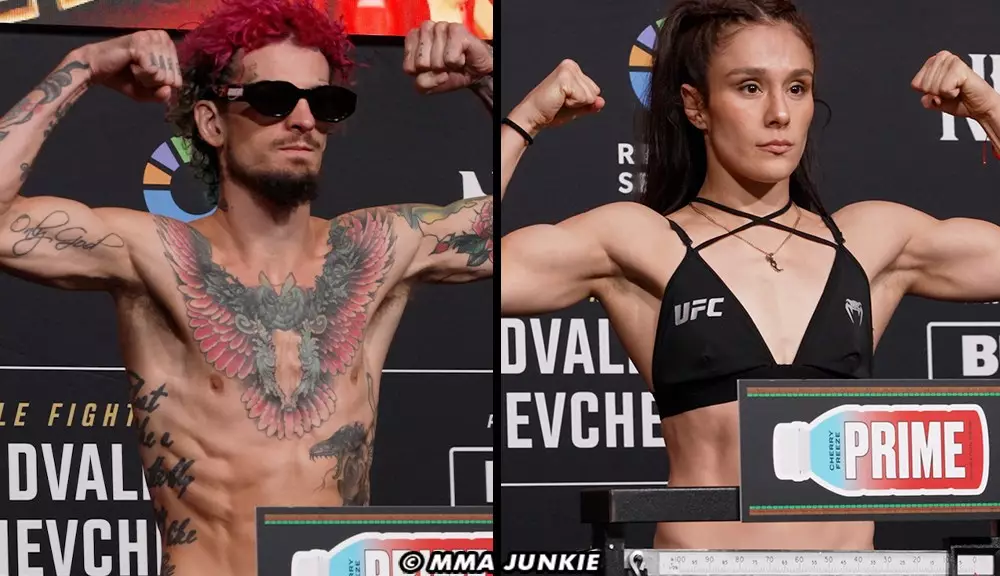The financial paradigm within mixed martial arts has witnessed substantial transformations over the years, especially concerning the compensation structures for fighters. The most recent UFC event, UFC 306, highlighted this evolution with the implementation of its Promotional Guidelines Compliance pay system, which has become an integral aspect of the organization’s business model. This payment system, amounting to $239,500 distributed among fighters participating in UFC 306, showcases a strategic shift in how the UFC incentivizes and supports its athletes.
Previously, compensation mainly revolved around fight purses and bonuses, but the UFC’s current approach incorporates additional factors such as outfitting requirements and media obligations. Through this comprehensive framework, fighters not only benefit from direct financial earnings but also conform to a code of conduct that enhances the promotional strength of the brand. The UFC continues to position itself as a pioneer in sports promotion, thereby influencing the standards to which other combat sports organizations might aspire.
An Overview of UFC 306 Earnings
UFC 306 was hosted at Sphere, with a mix of fights that engaged audiences both on-site and through pay-per-view. A detailed breakdown of the earnings illustrates the financial disparity among fighters based on their experience and tenure within the organization. For instance, experienced fighters such as Merab Dvalishvili and Valentina Shevchenko took home $32,000 each, in stark contrast to less seasoned fighters like Esteban Ribovics and Ketlen Souza, who earned as little as $4,000 or $4,500 respectively.
Such income brackets have been meticulously crafted under the UFC Promotional Guidelines Compliance pay structure, which classifies fighters based on their number of bouts. This tiered payment system not only rewards longevity but also encourages aspiring fighters to reach higher levels of participation while instilling a sense of progression. Champions receive significant bonuses, underscoring the UFC’s philosophy that exceptional performance should be duly rewarded.
The introduction of a royalty payment system based on merchandise sales marks another crucial innovation in the UFC’s revenue-sharing model. Fighters now receive a share of 20-30% from the sale of merchandise bearing their likeness, effectively allowing them to capitalize on their brand outside of the octagon. This long-term earning potential represents a substantial shift from traditional sports compensation models, where revenue generation tends to favor the organization over the athlete.
Such a system fosters an environment of mutual benefit between the UFC and its fighters, as both parties stand to gain from the popularity of individual athletes. As UFC athletes continue to build their personal brands, the enhanced financial prospects will likely attract more talent to the sport and contribute to the overall growth of mixed martial arts.
Comparative Analysis of Recent Payouts
Taking a closer look at recent payout statistics reveals an overarching trend toward increased financial support for UFC fighters. The compliance payouts from UFC events leading up to UFC 306 vary significantly, yet they indicate a steady investment in fighter compensation. For example, payouts from previous events such as UFC 304 exceeded $300,000, showcasing a robust financial infrastructure designed to support the fighters’ welfare.
Moreover, events like “UFC Fight Night 242” and “UFC on ESPN” indicate recurring distributions of hundreds of thousands, reflecting not only a sustained commitment to athlete compensation but also an adaptive strategy responding to market demands and fan engagement levels. As the UFC continues to host high-caliber events and attract global audiences, these financial figures are likely to rise further.
The financial landscape for UFC participants is advancing towards a more equitable model, driven by structured payments and future royalty opportunities. UFC 306 serves as a pivotal demonstration of this new approach, showcasing how the organization continues to evolve in addressing fighters’ needs while enhancing promotional strategies.
As the mixed martial arts industry matures, the UFC’s proactive adjustments may set a standard for other fight promotions, potentially leading toward universally improved fighter pay systems across the combat sports landscape. Increasing fighter compensation, audience engagement, and revenue-sharing models could redefine how athletes perceive their careers within the UFC, solidifying their status not merely as fighters, but as entrepreneurs within the sports industry.

